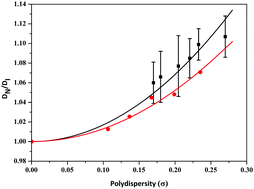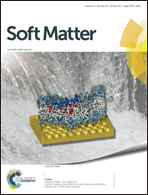Polydispersity reduction of colloidal plates via size fractionation of the isotropic–nematic phase transition
Abstract
Controlling the size polydispersity of colloidal particles is important for their phase transitions, resulting structures, and properties. In this study, a fractionation method was established to control the polydispersity of colloidal plates based on the isotropic–nematic (I–N) phase transition. The size ratio of nanoplates between the N phase and the I phase (DN/DI) was relatively large, whereas the size polydispersities in both the N phase and the I phase were smaller than that of the original sample before fractionation. The degree of fractionation was dependent on the time since the phase transition began and the polydispersity of the original sample. A long time resulted in a small DN/DI and a small degree of polydispersity reduction. The experimental data confirmed a quadratic scaling of DN/DI with polydispersity that was predicted by simulations. Large to small particles were segregated sequentially by sedimentation because of self-assembly and gravity. The polydispersity reduction based on the I–N phase transition can be utilized to select nanoplates with a certain size with improved size monodispersity.



 Please wait while we load your content...
Please wait while we load your content...